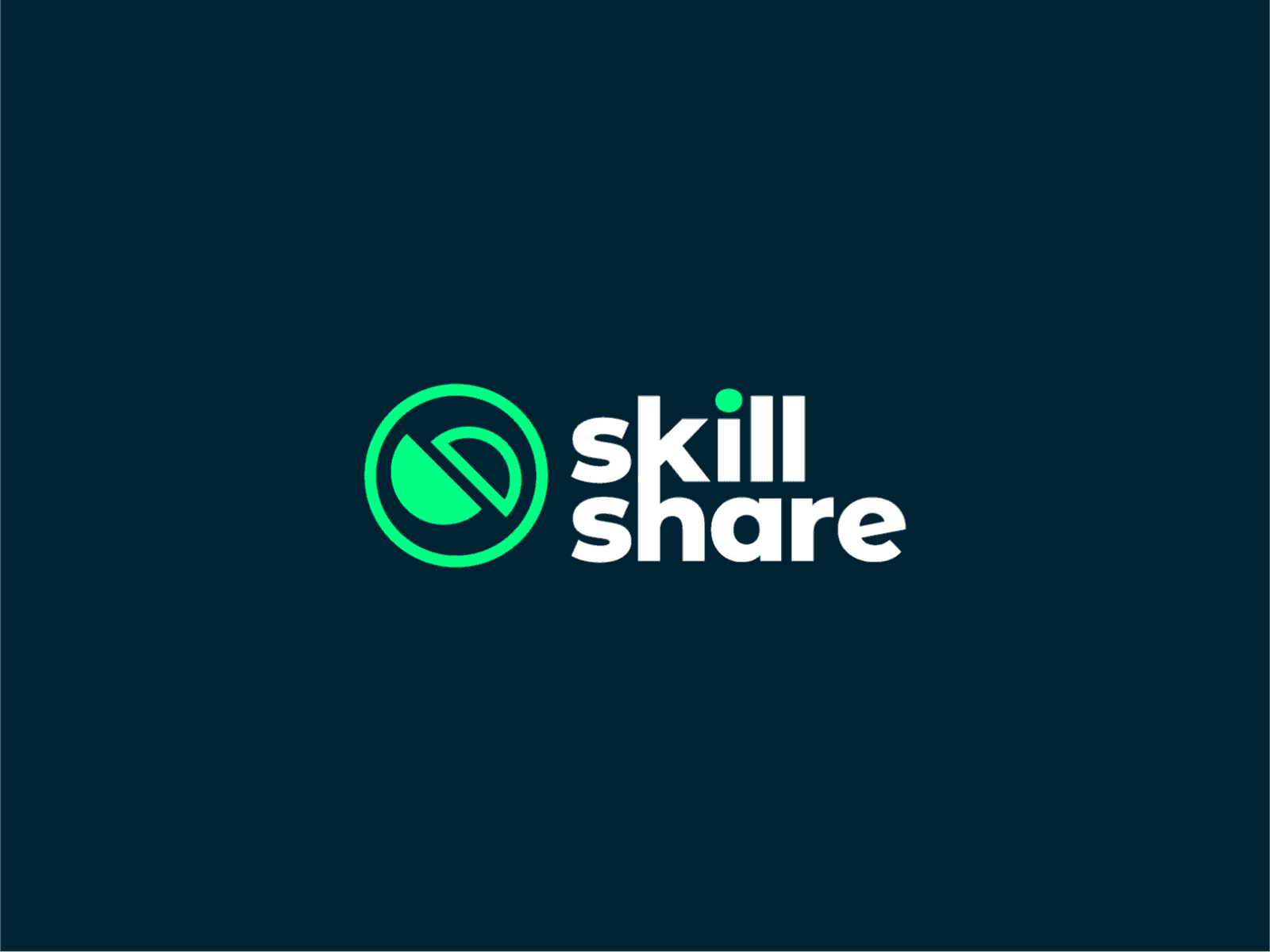SkillShare
At least 50% off from FlexSub
Subscribe Now
"Never stop learning," as the phrase goes. Skillshare, a website where you can learn a variety of skills by viewing video lecture series, can assist you in meeting that aim. Skillshare altered its focus a few years ago to teaching creative talents, and it now offers a variety of instructional content that might assist your profession, indulge your hobbies, or simply help you accomplish something new. Many of the courses include supplemental materials such as worksheets and readings, as well as interactive community spaces where students may share their work and provide comments to one another. It's also not expensive. Editors' Choice for online learning services is Skillshare.
While Skillshare is a delightful site to feed your brain, it may not have the courses you seek. MasterClass is preferable if you're looking for motivational words and advice from experts in their industries.
How Much Does Skillshare Cost?
Skillshare has a free tier, Premium memberships ($8 per month or $29.88 per year), and Teams accounts ($139 per person per year, with a minimum of two persons).
The free edition provides access to a limited number of video classes and accompanying content, such as PDF workbooks and community conversations. You can watch the intro video for any class, but you won't be able to access the majority of them otherwise. It was difficult to tell which classes were offered to free users during testing, which was frustrating.
A Premium subscription removes advertisements, unlocks the entire course catalogue, and allows you to download classes to the Skillshare mobile app for offline viewing. When you purchase an annual membership, you will also receive benefits from affiliates like as discounts on Adobe products, Squarespace subscriptions, Society6 merchandise, and more. The annual plan is also significantly less expensive than the monthly plan.
How Much Do Other Learning Sites Cost?
The cost of online learning is all over the place, with pricing fluctuating all the time, including Skillshare. Skillshare's monthly and annual pricing have risen and fallen several times. That's infuriating for folks who may now believe they were taken advantage of in the past.
Nonetheless, the current fee for personal accounts on Skillshare is extremely inexpensive. In instance, MasterClass costs $180 per year, with no monthly membership option. LinkedIn Learning is only available to LinkedIn Premium subscribers, whose monthly fees begin at $29 USD. Aside from online classes, membership includes improved access to people and information on LinkedIn.
Khan Academy is completely free to use. It's a non-profit organisation, and you can donate to it if you want to help financially.
Other sites that provide more practical skills training, such as Coursera, Udacity, and Udemy, provide some courses for free while others charge between $40 and $400 per month.
What's Inside Skillshare?
Let us now have a look at what Skillshare has to offer. The site divides classes into three basic categories: Create, Build, and Thrive.
Create includes subtopics for animators, creative authors, filmmakers, artists, graphic designers, illustrators, musicians, photographers, UI and UX designers, and web developers.
Business-related subtopics include analytics, freelance and entrepreneurship, leadership and management, and marketing.
At the present, Thrive has only two subtopics: lifestyle and productivity.
Use the search bar to look for classes that don't seem to fall into any of these categories. Consider the subject of cooking. Cooking classes abound on Skillshare, although you might not realise it based on these three categories.
What Are Skillshare Classes Like?
There is no set format for classes. Some have a few videos that last roughly ten minutes each. Other classes contain 50 brief films that last only one or two minutes. Some classes have homework. When this occurs, students share their inventions with other students who have taken the course, usually in the course's comments section. Some teachers remain to provide feedback on student work or to answer queries, but others have clearly not been onto the site in a long time.
In general, there are two kinds of courses: Skillshare Originals and classes developed by individuals. Individuals who create classes can make money from them. More on that later.
Skillshare Originals are courses that are created by Skillshare. Some are made in collaboration with companies such as Mailchimp, Patreon, and Eataly. They may have celebrity or semi-famous instructors, and the production quality is assured. An Original class nearly generally has numerous videos ranging from 8 to 10 minutes in length, each properly identified and intended to be watched in order. Because the videos are short, you can view them in spurts, pausing and resuming the session as needed. This structure allows you to go at your own pace.
To be fair, the greatest user-created content courses are similarly structured: short, linear, and properly labelled. Since our initial assessment of Skillshare, the firm has begun inspecting user-created films and removing those that do not satisfy Skillshare's quality criteria. There are still hundreds of classes available through the service. You can determine which ones are good since they get high ratings from students and a large number of students sign up for them.
While you, the learner, may never know how much effort went into creating a lesson, the greatest ones obviously adhere to a comprehensive structure while not requiring the instructor to read from a script word for word. The finest instructors anticipate where the session will go you and can take you there in an authentic manner. It's a significantly preferable framework than the planned manner of most LinkedIn Learning seminars, where far too many instructors have an overly corporate and occasionally robotic stage presence.
Getting Started
There is no set format for classes. Some have a few videos that last roughly ten minutes each. Other classes contain 50 brief films that last only one or two minutes. Some classes have homework. When this occurs, students share their inventions with other students who have taken the course, usually in the course's comments section. Some teachers remain to provide feedback on student work or to answer queries, but others have clearly not been onto the site in a long time.
In general, there are two kinds of courses: Skillshare Originals and classes developed by individuals. Individuals who create classes can make money from them. More on that later.
Skillshare Originals are courses that are created by Skillshare. Some are made in collaboration with companies such as Mailchimp, Patreon, and Eataly. They may have celebrity or semi-famous instructors, and the production quality is assured. An Original class nearly generally has numerous videos ranging from 8 to 10 minutes in length, each properly identified and intended to be watched in order. Because the videos are short, you can view them in spurts, pausing and resuming the session as needed. This structure allows you to go at your own pace.
To be fair, the greatest user-created content courses are similarly structured: short, linear, and properly labelled. Since our initial assessment of Skillshare, the firm has begun inspecting user-created films and removing those that do not satisfy Skillshare's quality criteria. There are still hundreds of classes available through the service. You can determine which ones are good since they get high ratings from students and a large number of students sign up for them.
While you, the learner, may never know how much effort went into creating a lesson, the greatest ones obviously adhere to a comprehensive structure while not requiring the instructor to read from a script word for word. The finest instructors anticipate where the session will go you and can take you there in an authentic manner. It's a significantly preferable framework than the planned manner of most LinkedIn Learning seminars, where far too many instructors have an overly corporate and occasionally robotic stage presence.
The Learner's Perspective
While testing Skillshare, I viewed various programmes, including courses on interior design, interior styling, memoir writing, personal essay writing, cooking, job applications, and more.
You can enable closed captioning, change the video playback speed, pause, go ahead, go back, and so on. When videos are brief and have clear names, you may easily go back and replay a certain section of the course.
The interior design lesson was comprehensive and well-organized. The instructor used brief movies that were well labelled and ordered correctly. She wore a lavalier microphone on her chest and used a decent camera to film the class. She intercut pictures of herself lecturing about interior design ideas with examples of designed interiors. This instructor also offers some interesting tools, such as apps and websites for visually constructing rooms and experimenting with colour palettes.
Among the writing classes, Roxane Gray's essay writing, Ashley C. Ford's personal nonfiction writing, and Mary Karr's memoirs were all excellent. Except for a few cutaways to book covers and websites, the writer spoke for nearly the entire duration of these three lectures.
Jonathan Van Ness, well known for the television show Queer Eye, has created a new self-care course that is fascinating to watch. The curriculum does not delve deeply into a single topic, as many of the other programmes do, but rather touches on a variety of topics, such as journaling, skin care regimens, decoupage, and yoga. The content is all entertaining, but it lacks substance. Skillshare might have done a better job of tailoring this training to a specific audience. This is an area in which MasterClass shines. It includes A-list celebrities and professionals at the very top of their areas teaching you in great depth and detail about their fields.
Community Features and Interaction
When a course requires learner participation, you can usually participate by glancing at the comment area below the video. Frequently, you will encounter directions regarding what to share, such as photos from a room you remodelled or a personal essay. Other students can then provide feedback on your work. On Skillshare, it appears like there is an unspoken rule: if you don't have anything pleasant to say, don't say anything at all. All of the comments we read were favourable and seemed to represent kids who were in a pleasant mood. That kind of input is less beneficial than in-depth, critical examination, but it's something.
Try Skillshare Workshops if you want greater contact and community participation. Workshops are classes that have greater structure and engage the community. They take place on specific dates and often have a timeframe and deadlines that students must adhere to. There isn't anything special that distinguishes Workshops from other classes, except having deadlines and a community of other students drives you to do the work.
Some of Skillshare's non-workshop sessions do include projects created by the instructor. They are completely optional. Other students in the class cannot notice that you watched the class videos but did not participate; this is also true for Workshops.
The level of participation varies greatly. Many students uploaded essays in writing classes, for example. However, no one shared images of their sample items in a sewing machine lesson. A Workshop about watercolour painting drew a decent level of interest, albeit much of it came from a Skillshare community manager or students who posted about how much they love watercolours.
What I didn't see were discussions regarding the underlying theory or the purpose of the issues themselves. In my previous experiences with academic online learning, teachers are constantly attempting to persuade students to assist each other learn by encouraging deeper discussions. What motivates us to do what we do? Is this the most effective way, and if so, why? What are the flaws in this approach or school of thought? That is not the purview of Skillshare. MasterClass contains hints of it, but it comes from the instructors, not the students.
The Teacher's Perspective
Anyone can be a learner or a teacher on Skillshare (or both). Teachers are in charge of all aspects of their courses, from developing them to publishing videos and resources. Teachers that host courses on Skillshare make money through referrals from students and other teachers, as well as royalties.
How much can Skillshare instructors earn? According to the corporation, royalties are calculated as follows: First, each month, Skillshare produces a pool of money for royalties, which is equal to 30% of Premium membership revenue. Second, Skillshare calculates the amount of minutes that Premium users (both paying and free trial) spent watching your videos. To qualify for royalties each month, you must have at least 30 Premium minutes watched across all of your films. When students increase the replay speed, the time spent watching lowers; for example, if a learner watches a 10-minute video at 2x speed, the teacher gets five minutes. Finally, Skillshare totals all Premium minutes seen for the month and assigns a percentage to each teacher. If an instructor receives 1% of all minutes viewed, they will receive 1% of the royalty pot.
SkillShare
At least 50% off from FlexSub
Better, flexible and cheaper subscriptions for a wide range of services in just a click of a button.
Get started now


